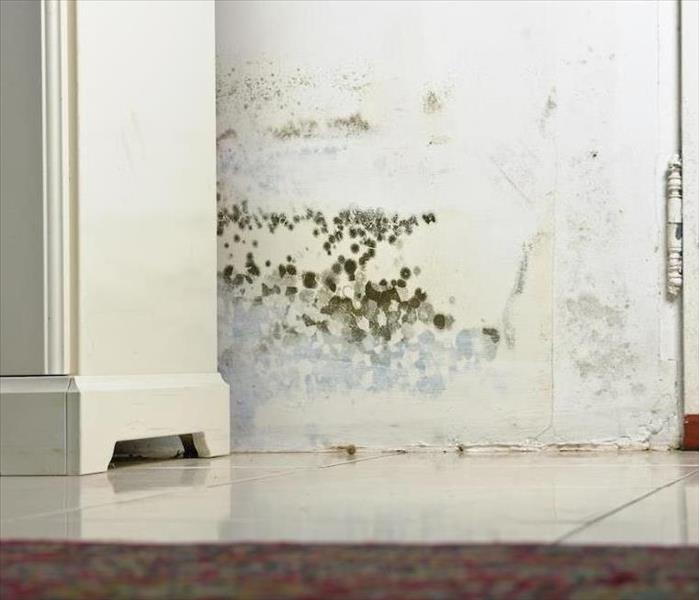Understanding the Basics of Mold Damage to Your Raleigh Home
2/6/2018 (Permalink)
 Finding mold in your home does not need to cause a panic. Contact SERVPRO to investigate and remediate the damage.
Finding mold in your home does not need to cause a panic. Contact SERVPRO to investigate and remediate the damage.
SERVPRO Offers Mold Remediation as Well as Preventative Tips for Homeowners
Mold can cause extensive damage to your Raleigh home if it is neglected. Understanding the basics about mold can help you spot the early signs of the damage and take steps to mitigate the problem before it gets out of hand.
The best line of defense against mold damage to your Raleigh home is to act fast and seek professional help. SERVPRO technicians have a better chance to control the situation if they spring into action during the early stages of the damage. Here are some facts that you should be aware of regarding mold and the damage it causes to your home.
Mold begins with a spore
Spores are microscopic structures that germinate to form mold. As they are microscopic, they can stay suspended in the air for a long time, and even a tiny mass can contain thousands of individual spores. If a mass of these spores is disturbed by anything, thousands of them are set free and can float in the air to reach almost anywhere in your home. SERVPRO professionals have the necessary equipment to limit this spread and contain the damage.
As the spores are tiny, even a gentle wind can carry them off and keep them suspended. The airborne spores eventually do settle down due to the gravity.
Spores germinate to form mold colonies
Spores can stay dormant for a very long time, waiting for the right conditions for germination. The right conditions include high moisture content, the right temperature and organic material to support growth.
Once the spores settle on a surface, they can absorb excess moisture and swell. They begin to grow by forming a network of filaments called hyphae. Some of these hyphae function as make-shift roots and anchor the mold network to the surface. Other hyphae bear spores on their tops.
Right conditions are essential for mold to thrive
Mold can thrive and grow if the conditions are just right. Excess moisture and a temperature between 68 to 86 degrees are ideal for the spores to germinate. Organic material such as wood, paper, fabric, walls, can act as a source of food as well.
Any surface that is open to the air accumulates spores over time, and if the conditions of temperature and moisture are conducive, mold can start growing.
Call SERVPRO of North Raleigh & Wake Forest today at (919) 790-1222 to schedule an inspection today.
Click here for more about Raleigh.

 24/7 Emergency Service
24/7 Emergency Service